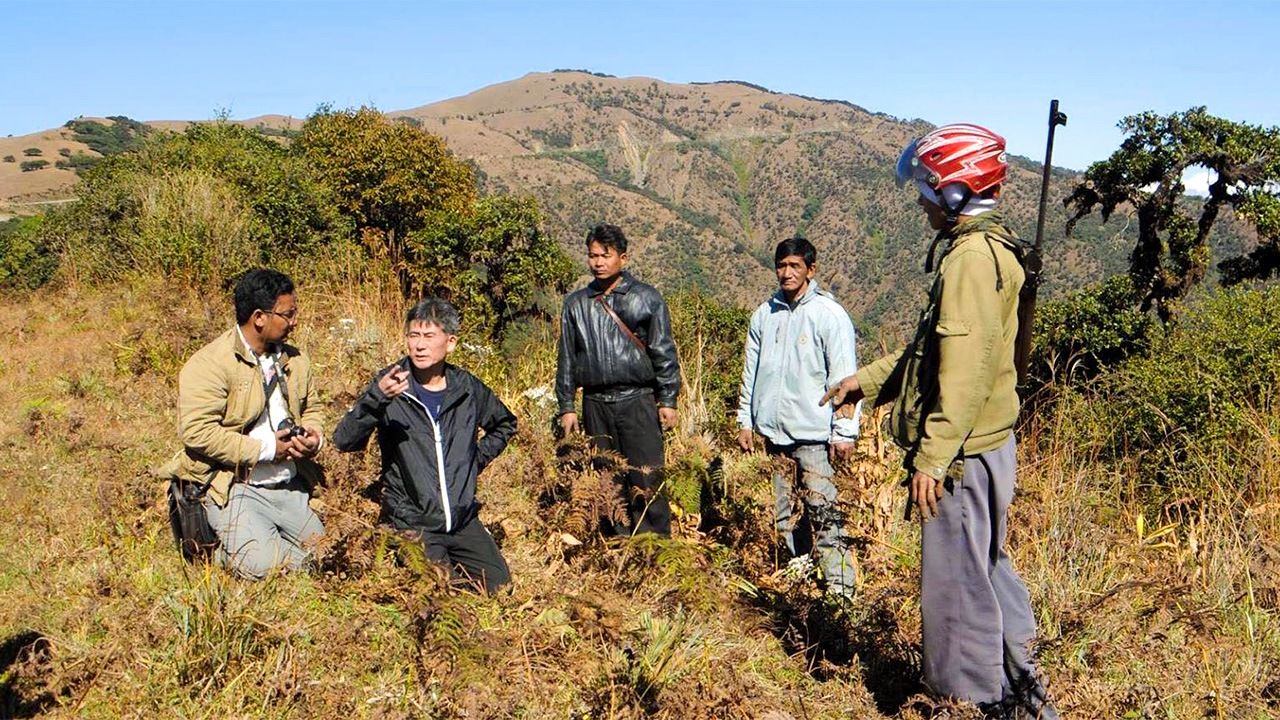
Two Japanese Supporting Peace Efforts with Myanmar’s Ethnic Minorities
Politics World- English
- 日本語
- 简体字
- 繁體字
- Français
- Español
- العربية
- Русский
Armed Resistance by Ethnic Minorities
There are said to be as many as 20 ethnic minority groups in Myanmar, and many minority forces in the country continue resistance against the rule of the central government. Relations between groups are delicate, with certain ethnic groups experiencing division due to divergence of opinions. The military strength of some is a source of embarrassment for the government. Pivoting this extremely complex ethnic antagonism towards resolution is the greatest challenge facing the country.
The failure to achieve peace with ethnic minorities has for many years provided justification for military control and the suppression of democracy. Despite the county’s great potential, this has been a cause of economic stagnation. The country is making steady progress towards realizing peace, although it tends to be overshadowed by the Rohingya crisis.
Two Japanese men have acted as mediators behind the scenes in the peace process: Imoto Katsuyuki, head of a nongovernmental organization retrieving human remains, and Sasakawa Yōhei, as a special envoy of the Japanese government.
While researching this article, in discussions about the ethnic minority issue, whether with people connected with State Counsellor Aung San Suu Kyi’s National League for Democracy government, the state military authorities, foreign relations, or aid groups, the names of these two Japanese men always came up. Despite the political sensitivity of the issue, this is a rare case of Japanese people acting in the role of intermediaries.
Myanmar is a multiethnic, religiously diverse country with a population of roughly 54 million. The Buddhist Bamar people comprise approximately 70% of the population, but according to government statistics, the country has around 135 ethnicities, which include many Christians and Muslims. When the country was a colony, Britain governed it through a policy of “divide and rule,” entrenching antagonism between ethnic groups, which have continued to wage armed conflict against the central government for the 70 years since independence.
A Setting to Sit Down and Talk
Imoto previously worked as an aid volunteer in Africa and Asia, and was at one time a Buddhist priest. He first came to Myanmar around 2010 for the purpose of gathering the remains of Japanese soldiers who perished in the Burma campaign in World War II. He was apprehended by the police and incarcerated for a number of days. There he encountered leaders of the NDL and youth from the democracy movement, imprisoned due to suppression by the military government of the time. Imoto wondered how he could help, and resolved to take action.
Some leaders of the armed minority resistance were in hiding across the border in Chiang Mai, Thailand. Imoto made contact with them, and also secretly visited minorities from Myanmar in the rugged mountain regions. In February 2011, he helped launch the United Nationalities Federation Council, a group representing 11 ethnic minority groups, including Kachin, Mon, Shan and Karen, following separate discussions with each of them. This created a single platform for the previously unassociated groups to negotiate with the government.
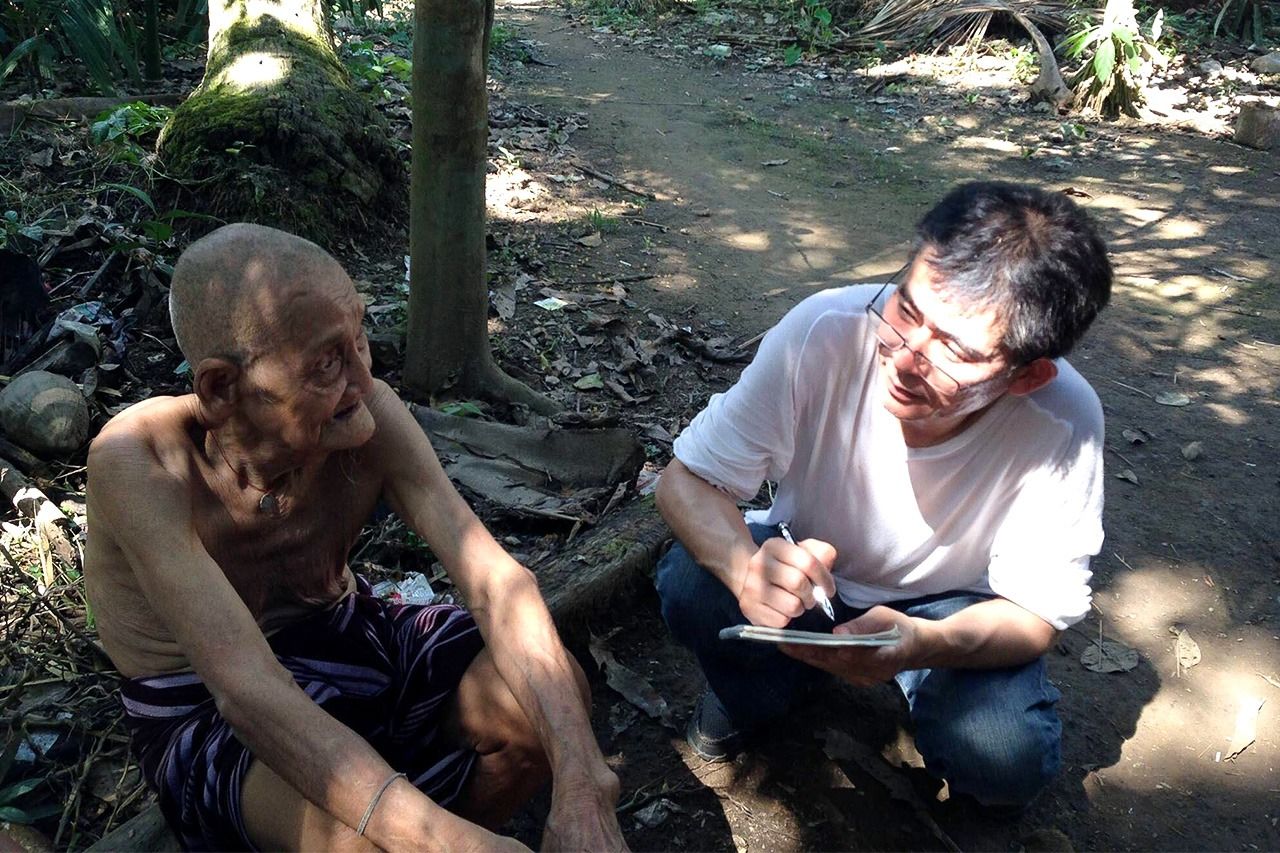
Imoto Katsuyuki interviewing a Karen elder for identification of remains in February 2014. (Courtesy Imoto Katsuyuki)
Initially, the Myanmar government was unsupportive of his work. Imoto authored two books describing his experiences from that time, Biruma no zero faitā (Burma’s Zero Fighter) and Kaette kita biruma no zero faitā (The Return of Burma’s Zero Fighter).
According to Imoto, “President Thein Sein was very angry that a ‘blacklisted’ Japanese man was meddling where he was not welcome. But later, his approach changed, when he realized that I could be of use to him.”
President Thein Sein, who has a military background, was at the helm of the transition from military to civilian rule, and was keen to resolve the ethnic minority issue. He started to occasionally contact Imoto through intermediaries.
“The truth was that the armed resistance was also tiring of conflict. They were exhausted. But they had their pride to protect. This made it tricky. I was at the frontlines, engaged in amicable discussions with them. I simply created the environment where they could meet to discuss the benefits of peace.”
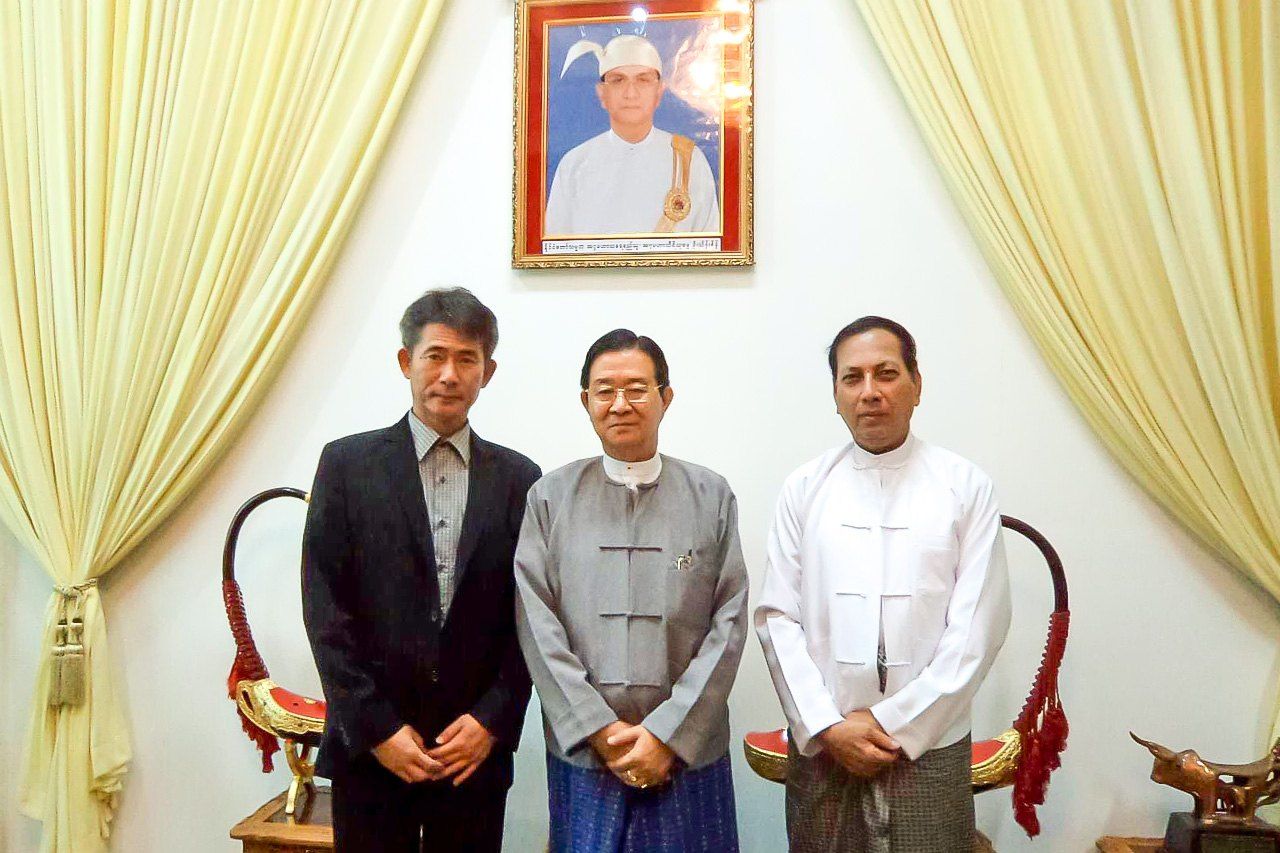
Imoto Katsuyuki (left) meeting with Minister of the President’s Office Aung Min on August 26, 2012. (Courtesy Imoto Katsuyuki)
The ethnic minorities are not fundamentally seeking independence, instead, they hope to participate in a federal state system that offers them strong autonomy. However, they also have strong distrust in the central government, owing to repeated betrayal.
Major General Aung San (father of Aung San Suu Kyi), who led Burma toward independence from Britain, held the Panglong Conference in 1947, with Shan, Kachin and other groups, reaching an agreement to seek independence to form a federal state. However, after his assassination, the content of the agreement was not fully reflected in the new constitution. In 1962, Prime Minister U Nu embarked upon constitutional reform based upon the Panglong Conference outcomes, but this was immediately followed by a military coup d'état, which halted efforts at forming a federal system.
Backstage Role in Bringing Peace
Sasakawa Yōhei has also expended great effort in the advancement of peace. In 2012, he was introduced by Imoto to contacts within ethnic minority groups, and held meetings with the heads of groups in Chiang Mai. The Nippon Foundation, headed by Sasakawa, which was already active in support for Hansen’s disease in Myanmar, used the opportunity to also become involved in ethnic minority peace efforts.
When the Japanese government took the unprecedented step of appointing Sasakawa, a civilian, as its representative, it hoped to expand Japanese-style conflict resolution around the world. Rather than getting too tied up in minor matters and focusing always on pushing things forward, the Japanese approach endeavors to take a step back, acting in the role of an intermediary, encouraging discussion between the concerned parties.
Sasakawa theorizes that Myanmar’s circumstances are particularly complex. It is not a binary confrontation, where antagonisms exist between certain ethnic minorities, or civil conflicts continue between old and new governments. In Myanmar, the force of democratization of the new regime, the military, and numerous ethnic minority armed forces each have differing points of view and demands. There is resentment that has built up over many years. Sasakawa believes that undoing the tangled threads requires repeated dialogue and patience, which, while it seems like the long route, is actually the shortest.
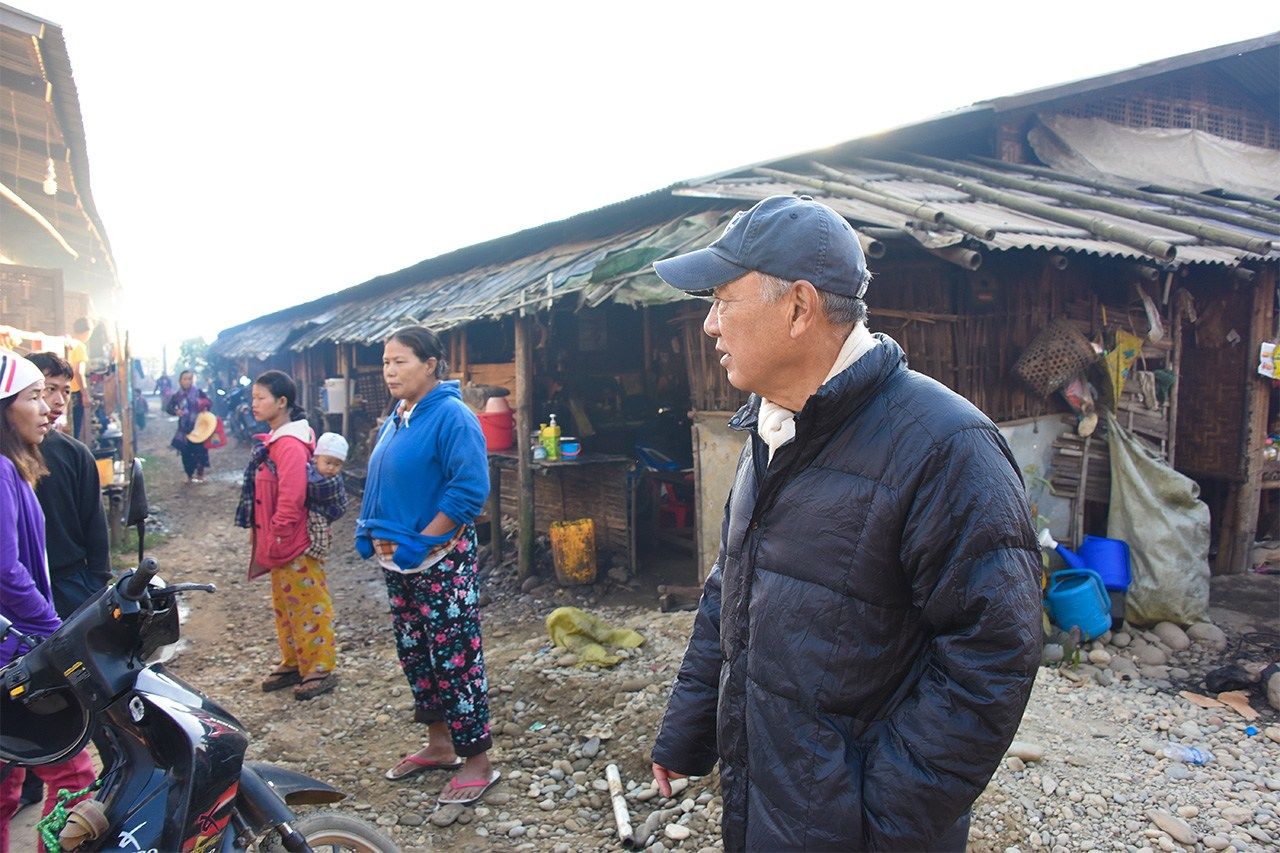
Sasakawa Yōhei visits an evacuee camp in Myitkyina, the capital of Kachin State, in December 2018. (Courtesy the Nippon Foundation)
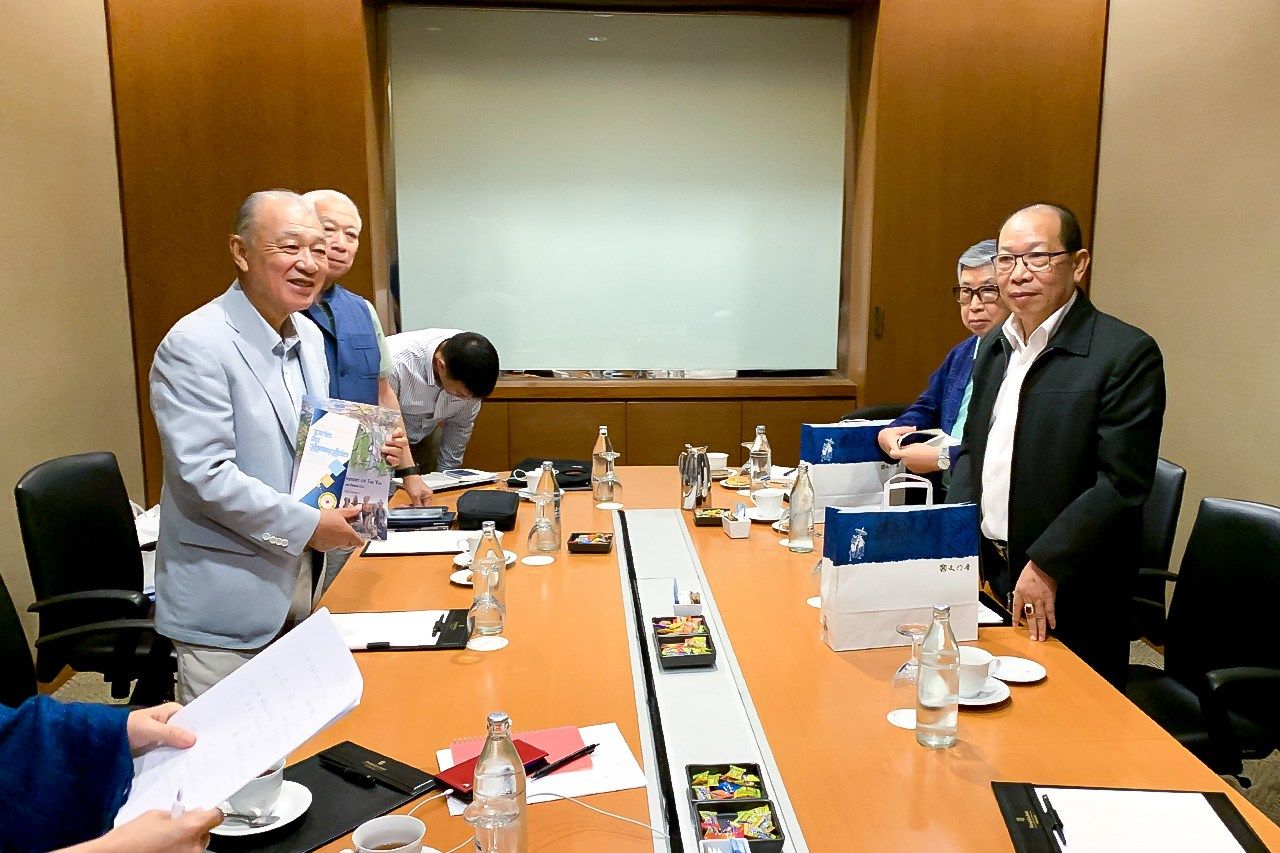
Sasakawa Yōhei in discussions with leaders of the Restoration Council of Shan State in Chiang Mai, Thailand, in June 2019. (Courtesy the Nippon Foundation)
Sasakawa had the support of the Nippon Foundation, which has a strong financial base. At the end of discussions, if the groups lay aside their weapons, the Japanese government and the Nippon Foundation step in to provide humanitarian aid. The Nippon Foundation has an office in Yangon, providing a structure whereby it can flexibly tackle projects. However, it does not involve itself in official negotiations between ethnic minority groups and the government regarding expansion of autonomy or rights.
Sasakawa explains that, “They are impatient for reconstruction assistance to proceed once hostilities have ceased, even if agreements are unsigned. It’s important to ensure that the fruits of peace reach the hands of the general population, so it’s better to take time with political negotiations.”
Peace Achieved Through Hard Work
When negotiations have been on the verge of breakdown, Imoto and Sasakawa have gone as far as to offer themselves as personal guarantors in order to stop the ethnic minority groups from leaving the table. The efforts of the pair achieved success in October 2015. Finally, after 70 years of fruitless negotiations, the government and eight ethnic groups including the Karen National Union, reached a historic cease-fire agreement. In February 2018, the New Mon State Party and Lahu Democratic Union (LDU) also signed the agreement. However, around half the groups remain outside of the agreement.
Major Ethnic Minority Forces in Myanmar
| Signatories to the 2015 Ceasefire Agreement | Karen National Union |
| Karen National Liberation Army | |
| Pa-Oh National Liberation Organization | |
| All Burma Students’ Democratic Front | |
| Chin National Front | |
| Arakan Liberation Party | |
| Democratic Karen Benevolent Army | |
| Restoration Council of Shan State | |
| 2018 Signatories to the Ceasefire Agreement | New Mon State Party |
| Lahu Democratic Union | |
| Non-signatory Parties | Kachin Independence Army and others |
Previously, Western countries were at the center of Myanmar’s ethnic minority peace talks. Countries including Norway, the United States, Britain, Switzerland, and Australia were involved in negotiations, but the United Nations, the European Union, China, Thailand, India, and Japan were invited to participate as witnesses to the Ceasefire Agreement signing ceremony in 2015. This is believed to be the first case of Japan playing a leading role in domestic peace issues for another country since the end of World War II.
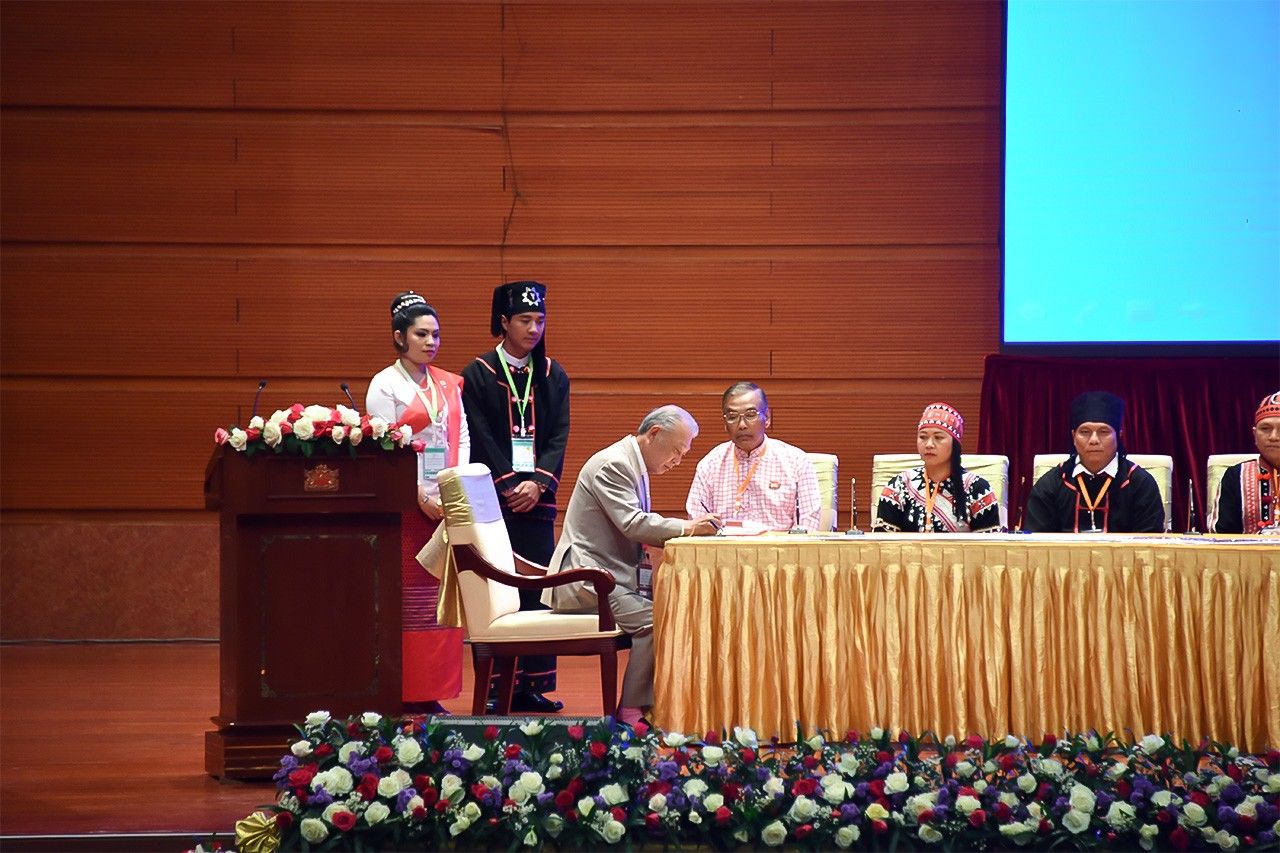
At the 2015 Ceasefire Agreement ceremony, in Naypyidaw, Myanmar, Sasakawa Yōhei (third from left) signs as an international witness. (Courtesy the Nippon Foundation)
Between the end of 2018 and April 2019, the Myanmar military unilaterally declared a ceasefire. Sasakawa was involved behind the scenes. Realizing that peace negotiations were delayed, he was able to personally persuade the military commanders to extend this until the end of June, thanks to his strong connections with the military administration.
Imoto and Sasakawa have played distinctive roles, the former as a civilian representative, and the latter representing the Nippon Foundation and the Japanese government. One thing they share in common is that they have gained the faith of ethnic minority groups, whose distrust had become entrenched through years of interference by the central and foreign governments, earning the pair the right to a voice in peace negotiations.
The Source of Trust in Japan
Around six or seven of Myanmar’s armed groups are yet to sign the ceasefire agreement, and the future remains uncertain. Imoto says that they are backed by China and seem to have been instructed not to negotiate with anyone else, and that they are funded by illegal activities like human trafficking and drug dealing. He goes on to accuse China of seeking chaos, and says that all that can be done with these forces is rely on the central government.
Nevertheless, Imoto still maintains a base in Yangon, continues his project for the collection of the remains of Japanese soldiers, and visits remote areas that tourists never see in order to keep in contact with the leaders of armed groups. Meanwhile, Sasakawa has visited Myanmar almost 100 times over the past decade or so. When he is in Yangon, he continues discussions with the military and Aung San Suu Kyi’s government, acting as a messenger to convey the sentiments of each side.
The Japanese government is no longer in a position to offer the lucrative foreign aid it did in the past, and enjoys less popular support for generous distribution of assistance. Despite this, Japanese individuals are managing to produce results in the move towards peace, through their individual efforts combined with limited governmental assistance. There is no doubt that this is also a source for the trust which Myanmar places in Japan.
(Originally published in Japanese on July 18, 2019. Banner photo: Members of the Zomi tribe (Chin people) of Chin State working together with Imoto Katsuyuki (second from left) in a survey to identify the remains of Japanese soldiers in February 2013. Courtesy Imoto Katsuyuki.)